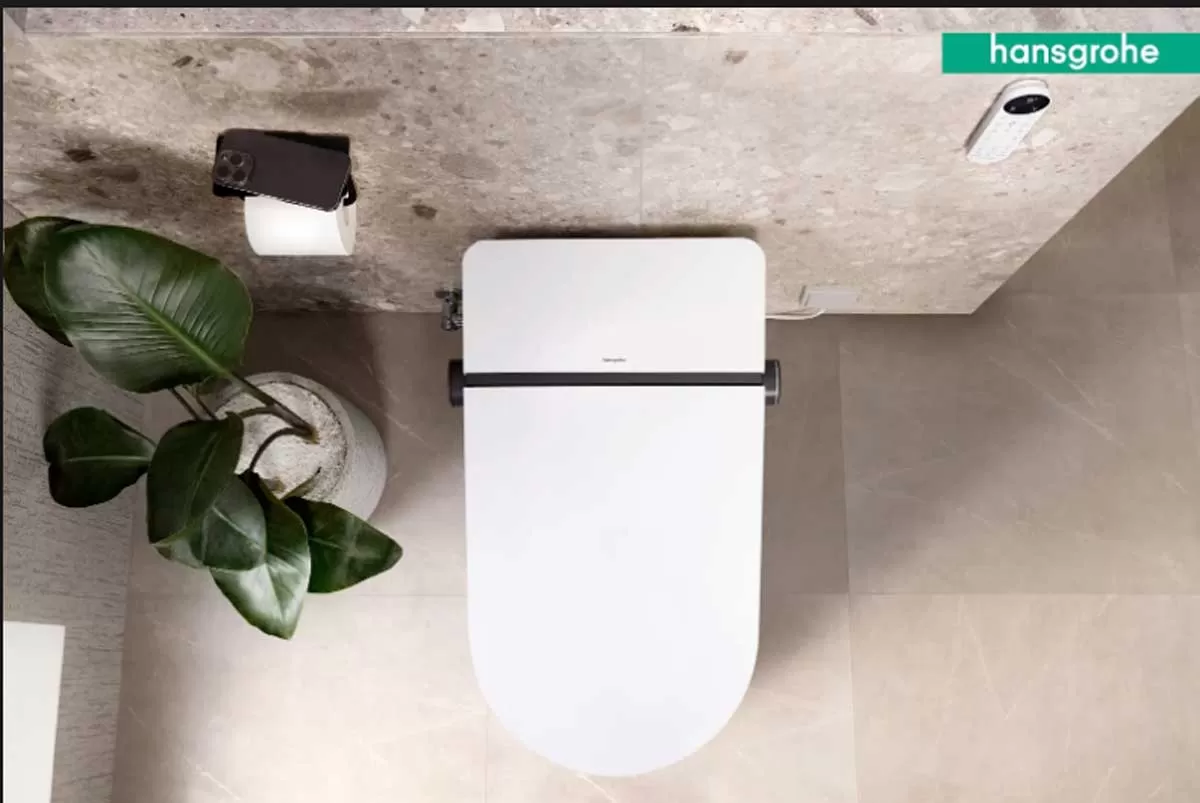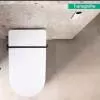Take a look at what's trending in the doors and windows market - and ways to improve solution performance!
01 Sep 2018
12 Min Read
CW Staff
Every building needs doors and windows - it's that simple. <br />
With real-estate construction expanding across the country, it is little wonder that the Indian market for doors and windows is growing in double digits, across key material segments, from wood, steel, glass and aluminium to un-plasticised polyvinyl chloride (uPVC) profiles.
<p></p>
<p> If the Indian market for uPVC doors and windows is growing at about 15-20 per cent, according to <span style="font-weight: bold;">Navi Ahuja, General Manager, Siegenia India,</span> the market for aluminium doors and windows is expanding at 35-40 per cent.</p>
<p> Demand for uPVC and aluminium doors and windows is growing at about 10 per cent annually, reckons Mahesh Londhe, Technical Head, Veka India.</p>
<p> In value, the Indian market for uPVC and aluminium doors and windows has grown from Rs 6 billion in 2006 to Rs 15 billion in 2015, says <span style="font-weight: bold;">Mario Schmidt, Managing Director, Lingel Windows and Doors Technologies.</span></p>
<p> <span style="font-weight: bold;">Preferred materials<br />
What sorts of window and door systems are preferred for different classes of buildings?</span><br />
'Developers of affordable housing tend to buy products made of wood, steel or basic small aluminium systems,' says Schmidt. 'However, these developers are not conscious about buying products conforming to any industry standard. Developers of medium and high-segment housing use uPVC windows and system aluminium, and they check that the window supplier follows standards.'</p>
<p>In commercial developments, Schmidt says aluminium curtain walls or fixed windows are the preferred choice as most such buildings are centrally air-conditioned and controlled.</p>
<p>'Timber or teak main doors are staple features of affordable and medium housing projects,' says <span style="font-weight: bold;">VS Rajan, Managing Director, Geze India</span>. 'In the luxury segment, the preference is mostly for teak doors while glass, aluminium framed or timber doors are used in commercial projects.'</p>
<p> <span style="font-weight: bold;">What's trending? What's new? </span><br />
In the market for aluminium systems for housing projects, 'slim-line aluminium systems are the new entrant in upmarket projects,' observes Ahuja. </p>
<p> Products made of one material that mimic another material are in demand for delivering dual benefits.</p>
<p> 'High-end wooden windows designed like uPVC or aluminium systems have made an entry in the market as have aluminium-clad uPVC windows for a wider colour choice,' says Schmidt.</p>
<p> Meanwhile, Londhe notes that in the uPVC window segment, products offering a wood finish are much in demand.</p>
<p> Colour and variety in materials are finding expression, both in residential and commercial spaces.</p>
<p> 'Of late, powder-coated steel doors have made an appearance in affordable and medium segment housing projects,' adds Rajan. 'Walnut and golden oak coloured doors as well as uPVC and aluminium doors are in great demand,' adds Schmidt. Laser-cut metal and MDF panels, resin, acrylic and even leather cladding are being used alongside a lot of colour in both doors and windows in the form of ACP sheets, PU coating, tinted glass and even digital prints, according to <span style="font-weight: bold;">Shami Goregaoker, Design Director, GA Design.</span></p>
<p> <span style="font-weight: bold;">Romesh Sapra, Director, Sapras Architects & Engineers</span> adds, 'The current demand is towards simplicity and minimalism. Wood and aluminium would probably be the only high-end options, material-wise. With the onset of 3D printing, we might see some resin frames and shutters soon.'</p>
<p> 'European systems are trending nowadays, in select medium segment housing projects (tilt and turn) and luxury projects (tilt and turn, lift and slide and fold and slide),' adds Ahuja.</p>
<p> Typically, doors and windows account for between 8 per cent and 15 per cent of the cost of a project, says Sapra. European systems are high-end solutions.</p>
<p> 'The hardware (the third component of a window or door besides the frame and glass) for a tilt-and-turn window costs about Rs 1,200-1,500 per sq ft,' reckons Ahuja. 'A lift-and-slide door costs roughly Rs 1,200-1,500 per sq ft, and these are mainly used for bigger sliders, while a fold-and-slide door can cost anywhere between Rs 1,800 and Rs 2,000 per sq ft, and is a good fit where the need is for 90 per cent opening.'</p>
<p> <span style="font-weight: bold;">Advantage uPVC </span><br />
'Conventionally, wood, steel and aluminium are used for windows and doors; uPVC is the newest entrant to this group of materials and has cornered only 5-7 per cent of the window market so far,' says <span style="font-weight: bold;">Arun Sharma, Managing Director, Aluplast India.</span> 'Since uPVC made an entry in India in 2000, acceptance for it has grown manifold,' adds Sharma. 'Chinese and Turkish products have presented some challenge to the growth of this sector. Fortunately, more aware customers are now fairly discerning about what they buy.'</p>
<p>Greater awareness of the advantages of uPVC over aluminium and wood would help drive demand for it, agrees Rajan. 'For instance, uPVC weighs less, is fully recyclable, demands less maintenance, and offers better thermal insulation.' </p>
<p> 'uPVC windows are durable, easy to maintain and look attractive for a long time,' adds Schmidt, explaining, 'it lends itself to achieving sound insulation, especially by means of the double shutter concept. Weather-proofing can also be attained. Well-sealed, double-glazed uPVC windows have good thermal insulation properties and can save energy and reduce electricity consumption even without using expensive special glass. Our products provide a perfect locking system that further helps improve the performance of air tightness.'</p>
<p> With growing awareness of these benefits, Rajan expects the new residential construction market to opt for uPVC door and window solutions.</p>
<p> <span style="font-weight: bold;">Windows by type</span><br />
Increasing glass sizes, improved heat reflectivity and laminate technology have changed people's perception towards glass fatades, observes <span style="font-weight: bold;">Mitu Mathur, Director, Gian P Mathur & Associates.</span> </p>
<p>While the built environment is seeing an increasing use of structural glazing, this is still mostly being used for commercial applications and common areas in residential buildings such as staircases and lift lobbies, observes Londhe. 'Conventional windows are still the preferred product for residential buildings; and here, Indians prefer sliding window systems compared to casement systems, despite the latter being a better performing product.'</p>
<p> <span style="font-weight: bold;">Why's that?</span><br />
'Sliding systems are preferred for their convenience of operation and maintenance,' he explains. 'Sometimes, buyers are restricted by building authorities from changing the window typology to maintain the symmetry in elevation.'</p>
<p> 'Structural glazing and casement (top hung) windows are the preferred choice for commercial properties while sliding and casement windows and doors are the common choice for affordable and medium segment housing projects,' adds Ahuja.Obviously, the quality of uPVC sections used for sliding windows differs across all the residential segments. 'Sliding windows for affordable and medium housing and commercial properties cost about Rs 250-600 per sq ft while those for the luxury segment cost Rs 1,000-5,000, or more,' says Londhe.</p>
<p> <span style="font-weight: bold;">Towards better performance</span><br />
Across the board, buyers are looking for better aesthetics, security, protection against rain, wind, and so on; essentially, they want performance. But this is most pronounced in the higher segments.</p>
<p>'In the medium to luxury residential property segment we cater to, customers are looking for performances in window profiles,' says Sharma. 'They want windows that provide high sound insulation, and that are airtight to curtail operational air-conditioning expenses, watertight to ensure resistance to extreme weather, and break-in resistant. They are also looking for versatile profiles systems that can fit any sort of glass.'</p>
<p>To this end, Aluplast offers profiles with machine-fitted (co extruded) with high-quality gaskets. 'Machine-fitted gaskets eliminate human error in this fitting, which can compromise the profiles' performance,' explains Sharma. 'Ready-to-use profiles are also plug-and-play products that can save up to one hour of fabrication time per window.'</p>
<p>With the shortage of skilled manpower for site installations, speedy installation is increasingly becoming a must-have feature for a window solution. 'Other occupants are averse to being disturbed by work on sites adjacent to their premises. Hence, it is better to use factory-made doors and windows that are easy to install on site,' opines <span style="font-weight: bold;">Milind Pai, Chief Architect, Milind Pai Architects & Interior Designers.</span></p>
<p>To deliver the best outcomes, Londhe suggests customising windows for the given requirement. As an example, he explains: A casement system with thicker laminated glass offers good sound insulation but if heat insulation is also required, the solution should include a double-glazed unit or a laminated double-glazed unit. </p>
<p>An uPVC profile section for double glazing is largely the same as the one for single glazing, costing between Rs 500 and Rs 1,000 per sq ft depending on the quality, and beyond Rs 1,000 per sq ft for high-end windows for the hotel industry where heat and sound insulation is crucial. Typically, only the glazing beads change as per the glass thickness. Also, as double-glazed units are heavier than single-glazed units, window hardware such as friction stays and hinges change as per the total weight of the shutter including the glass.</p>
<p>Alternatively, lift-and-slide or slide-fold systems can be an ideal choice for bigger window openings, says Londhe.</p>
<p>For his part, Mathur makes notes of factories where basic flush doors can be customised to suit the budget and qualitative aspirations of end-users and directly installed on the site.</p>
<p> Window and Door Standards<br />
Standards for windows and doors can cover material and performance requirements. Common standards include the British Standards (BS), European Norms (EN) and Indian Standards (ISI). </p>
<p>'Consultants in India using un-plasticised poly vinyl chloride (uPVC) profile sections usually specify the EN12608-1 standard, applicable in Europe and Asia,' says <span style="font-weight: bold;">Mahesh Londhe, Technical Head, Veka India. </span>'Alternatively, consultants using uPVC windows and uPVC profile sections refer to standards prepared by the UPVC Windows & Door Manufacturers Association, which is currently in the process of getting these standards approved by the Bureau of Indian Standards. Consultants rarely specify the provisions of the National Building Code.'</p>
<p>Low awareness of the new code may be why it is rarely specified.<br />
'At present, the industry is running awareness shows on the new National Building Code for architects, contractors and official bodies; this new code covers glass and glazing systems for the first time,' notes Mario Schmidt, Managing Director, Lingel Windows and Doors Technologies.</p>
<p><span style="font-weight: bold;">VS Rajan, Managing Director, Geze India,</span> lists some BS clauses applicable to doors and windows:<br />
</p>
<ul>
<li>BS 7412:2007: Specification for window and door sets made from uPVC extruded hollow profiles.</li>
<li>BS EN 12608:2003: uPVC profiles for the fabrication of windows and doors. </li>
<li>Classification, requirements and test methods.</li>
<li>BS 4873:2009: Aluminium alloy windows and door sets. Specification.</li>
<li>BS 644:2012: Timber windows and door sets. Fully finished factory assembled windows and door sets of various types. Specification.</li>
<li>BS 6510:2010: Steel-framed windows and glazed doors. Specification.</li>
<li>BS 8529:2010: Composite door sets. Domestic external door sets. Specification.</li></ul>
<p> <span style="font-weight: bold;">- Charu Bahri</span></p>
<p> Architect inputs sourced from June 2018 issue of CW Interiors</p>


















